Being essentially, asexual, immortal beings, the Elder Things are not constrained by specific life cycle functions and are not overly concerned with reproduction. In addition, their ability to enter into cryptobiosis over extremely long periods of time and under very adverse environmental conditions, means the Elder Things are uniquely adapted to survive in interstellar space.
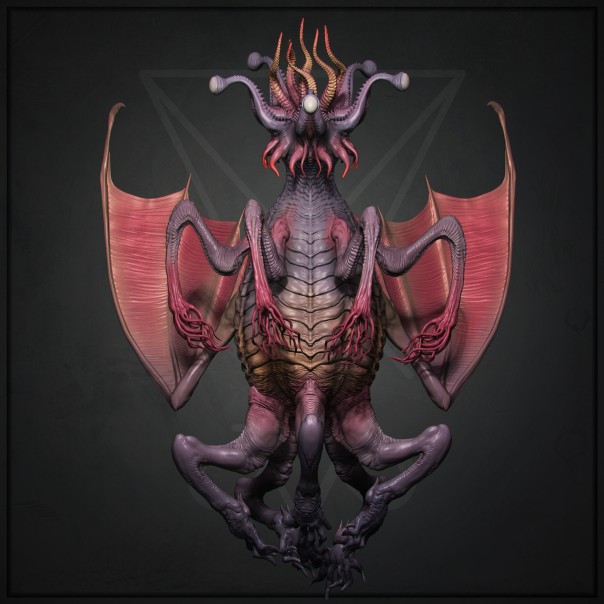 Elder Thing by Sadan Vague (www.sadania.artstation.com)
Elder Thing by Sadan Vague (www.sadania.artstation.com)
Previously we hypothesized that the Elder Things may use dark matter and/or dark energy to propel themselves through space. Additionally, we know from their discovery in Antarctica that they go into a cryptobiotic state for long periods of time. Thus, it is not surprising that they would remain in such a state for millennia, drifting thorough interstellar space. Such a mode of existence is a very energy efficient means of colonizing other ecosystems, or in their case planets. A wide variety of organisms behave in a similar manner, such as phytoplankton, invertebrates and plants (e.g. seeds). In addition, we are familiar with at least one multicellular organism that can survive the rigors of space – the tardigrades.
 A tardigrade
A tardigrade
Tardigrades, also known as water bears, are water-dwelling, multicellular, micro-animals of the phylum Tardigrada. These organisms have been found in hot springs and on the top of the Himalayas, in polar regions and the deep sea; they are some of the most resilient Terran organisms. Tardigrades can survive extreme temperatures, pressures, a absence of oxygen, dehydration, high amounts of radiation (they can withstand 1,000 times more radiation than any other Terran animal) and a complete lack of food. In fact, tardigrades are so resilient that they are one of the few groups of organisms to have survived all five of Earth’s mass extinctions. Thus, its not surprising that tardigrades are the first known animal to have survived when exposed to outer space.
One reason for the high degree of resiliency in the tardigrades relative to the exposure of high amounts of radiation in space, is its unique damage suppressor protein, called Dsup, which suppresses the frequency of DNA breaks associated with high amounts of radiation. It may be possible that among the many unique adaptations (e.g. extremely tough but flexible hide, the potential ability to utilize dark energy / dark energy), the Elder Things have its own set of Dsup proteins that allow them to survive drifting through space as intergalactic plankton.
 The tardigrade Hypsibius dujardini – an immunofluorescent micrograph
The tardigrade Hypsibius dujardini – an immunofluorescent micrograph
According to Dyer, early bas-reliefs found in the mountains of madness represented the preterrestrial life of the Elder Things on other planets, in other galaxies and even in other universes (more on this in a future article). Additional bas-reliefs indicated that they arrived on a “…nascent, lifeless earth…” although based on estimates of when the Elder Things arrived on Earth the world already had life but it was only microbial in nature. The Elder Things were said to have “…filtered down from the stars when earth young –.” However, while the Elder Things may have possessed an entire array of adaptations to survive in a cryptobiotic state drifting through space until they arrived on a habitable world, based on the bas-reliefs as the Pleistocene drew on the Elder Things “…had lost track…” of the ability to travel through space.
 Bas-relief of the spawn of Cthulhu found in the Mountains of Madness (www.propomicon.blogspot.com)
Bas-relief of the spawn of Cthulhu found in the Mountains of Madness (www.propomicon.blogspot.com)
Through the centuries the Elder Things experienced a war with the spawn of Cthulhu as well as a number of rebellions of their Shoggoth creations. Thus, by the time the inter-dimensional Mi-Go arrived on Earth, the Elder Things wanted to leave the planet in search of other worlds for colonization. However, when they attempted to leave Earth, they “…found it no longer possible to leave the earth’s atmosphere. Whatever the old secret of interstellar travel had been, it was now definitely lost to the race.” This passage is extremely interesting in that it makes it difficult to accurately describe just exactly how the Elder Things traveled through space.
 Elder Thing by Steve Maschuck
Elder Thing by Steve Maschuck
Based on earlier accounts of their complete lack of dependence or interest in mechanical devices we know their ability to travel through space is not based on technology. While space travel may be more of a biological adaptation, their essentially immortal status and the general absence of sexual reproduction, indicates that more than likely the Elder Things did not “loose” the ability to travel through natural selection (as least based on the way we understand how Terran evolution operates). Thus, I hypothesize that interstellar travel was more of a cultural trait or ability that was known and shared amount the Elder Things. Cultural traits, which are not evolutionary in nature, that are past from one generation to the next in humans include language and writing. Thus, interstellar travel may have been a cultural trait in the Elder Things.
 Elder Thing art for Sandy Petersen’s Cthulhu Wars
Elder Thing art for Sandy Petersen’s Cthulhu Wars
The colony of Elder Things that reached Earth and remained on the planet for millions of years had no need to travel through interstellar space and so not only forgot how to travel through space but even how to leave the planet’s atmosphere. Thus, over time, this ability or knowledge was simply lost, at least to those who colonized the Earth. However, their inert resiliency was not entirely lost since they could still live in the deep ocean depths and still put themselves into a state of cryptobiosis for millions of years.
Next time we will review how other colonies of Elder Things not only retained their ability to travel through space but also learned how to travel through higher dimensions to other Universes. Thank you – Fred.











 Fossilized imprint of the red alga Bangiomorpha, one of the first multicellular organisms
Fossilized imprint of the red alga Bangiomorpha, one of the first multicellular organisms The Ediacaran ecosystem in the Precambrian
The Ediacaran ecosystem in the Precambrian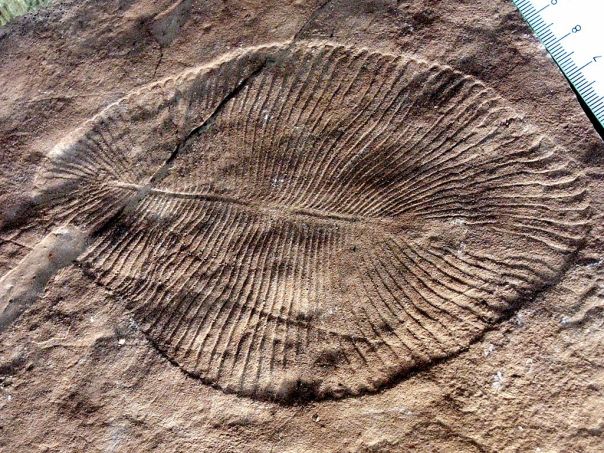 Fossil of Dickinsonia
Fossil of Dickinsonia Dinosaur footprints at the La Rioja Cultural Heritage site
Dinosaur footprints at the La Rioja Cultural Heritage site Some of the earliest fossil footprints of a terrestrial organism on Earth
Some of the earliest fossil footprints of a terrestrial organism on Earth Illustration of Elder Thing footprints by Pete Von Sholly
Illustration of Elder Thing footprints by Pete Von Sholly![herbert-west-reanimator-and-kindred-night-spawn-vol14-hardcover-by-h_p_-lovecraft-[3]-4328-p](https://lovecraftianscience.files.wordpress.com/2017/12/herbert-west-reanimator-and-kindred-night-spawn-vol14-hardcover-by-h_p_-lovecraft-3-4328-p.jpg?w=604)

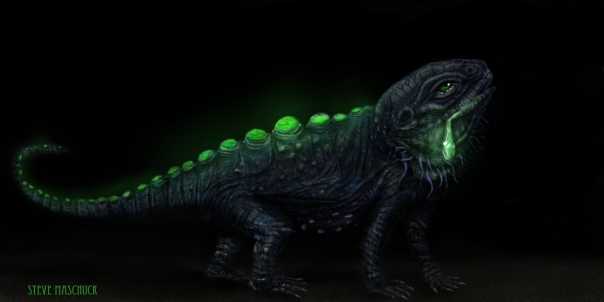
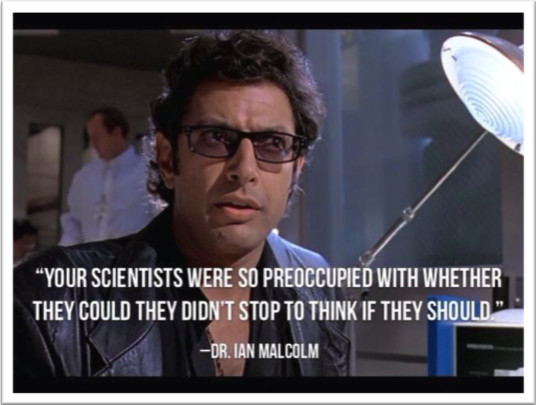

 A technician re-programming one of the hosts on HBO’s Westworld.
A technician re-programming one of the hosts on HBO’s Westworld. Shoggoth by Manzanedo (www.deviantart.com)
Shoggoth by Manzanedo (www.deviantart.com)

 Surface scum of blue-green algae on Lake Hopatcong in fall of 2016 – Level 0 Consciousness?
Surface scum of blue-green algae on Lake Hopatcong in fall of 2016 – Level 0 Consciousness? Shoggoth building a structure under the guidance of the Elder Things by Howard V. Brown
Shoggoth building a structure under the guidance of the Elder Things by Howard V. Brown A host now re-programming itself in a unique form of Lamarckian evolution
A host now re-programming itself in a unique form of Lamarckian evolution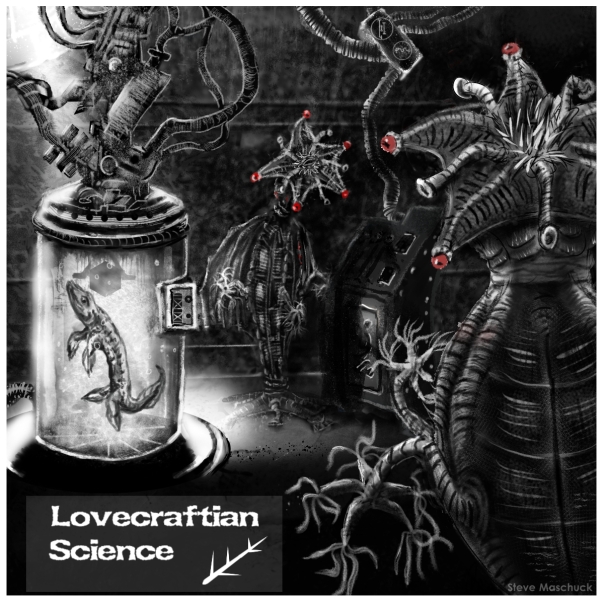
 Zoey, the English bulldog, can be considered a form of artificial life
Zoey, the English bulldog, can be considered a form of artificial life

 The creator examining his creation in HBO’s Westworld
The creator examining his creation in HBO’s Westworld A terrestrial shoggoth by KingOvRats (www.deviantart.com)
A terrestrial shoggoth by KingOvRats (www.deviantart.com) Shoggoth by Michael Bukowski (www.yog-blogsoth.blogspot.com)
Shoggoth by Michael Bukowski (www.yog-blogsoth.blogspot.com) Shining Trapezohedron
Shining Trapezohedron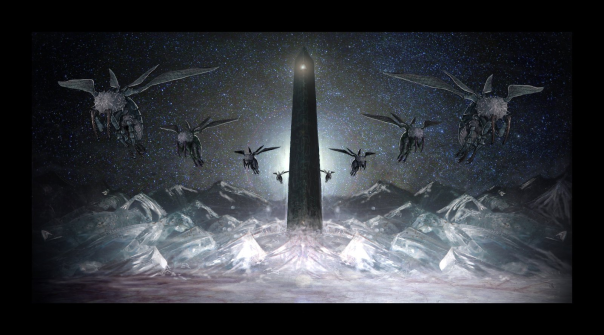 Yuggoth Watchtower by Chaberwood (www.deviantart.com). Was the Shining Trapezohedron housed in a structure like this on Yuggoth?
Yuggoth Watchtower by Chaberwood (www.deviantart.com). Was the Shining Trapezohedron housed in a structure like this on Yuggoth?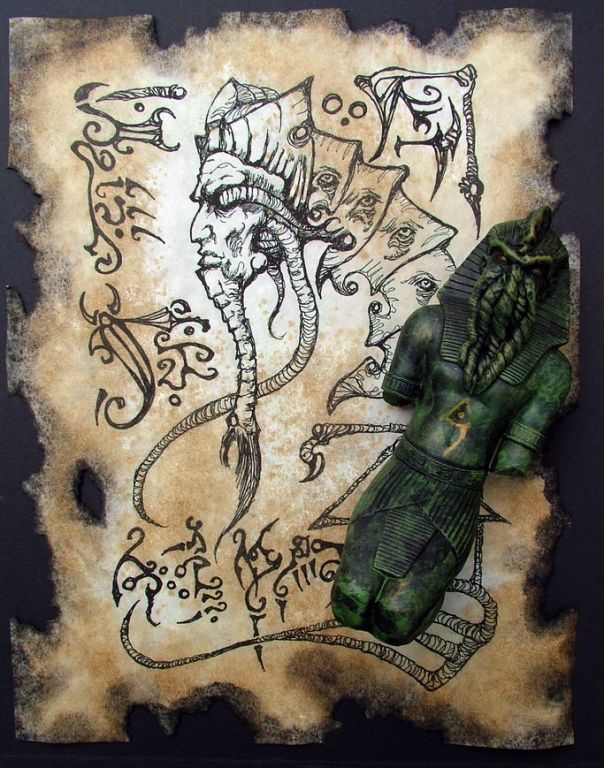 Pharaoh Nephren-Ka the Black Pharaoh by Mr. Zarono (www.deviantart.com)
Pharaoh Nephren-Ka the Black Pharaoh by Mr. Zarono (www.deviantart.com) Three-Lobed Burning Eye by Steve Purcell
Three-Lobed Burning Eye by Steve Purcell Abhoth from
Abhoth from  Children of Abhoth by Christopher Burdett (www.deviantart.com; Fantasy Flight Games, 2012)
Children of Abhoth by Christopher Burdett (www.deviantart.com; Fantasy Flight Games, 2012) An Elder Thing valiantly faces a Shoggoth by SPark (www.spark.artician.com)
An Elder Thing valiantly faces a Shoggoth by SPark (www.spark.artician.com) Abhoth by Jason B. Thompson (www.mockman.com)
Abhoth by Jason B. Thompson (www.mockman.com)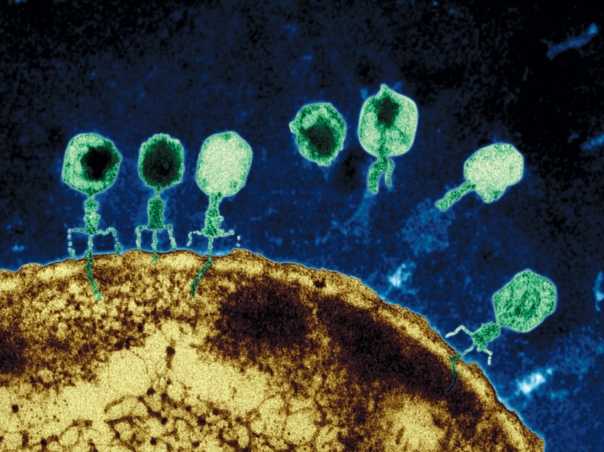 Viral phages injecting their genetic material into a cell for reproduction. Are viruses all that is left of Abhoth? (www.jonlieffmd.com)
Viral phages injecting their genetic material into a cell for reproduction. Are viruses all that is left of Abhoth? (www.jonlieffmd.com) Abhoth by Clone Artist (www.deviantart.com)
Abhoth by Clone Artist (www.deviantart.com)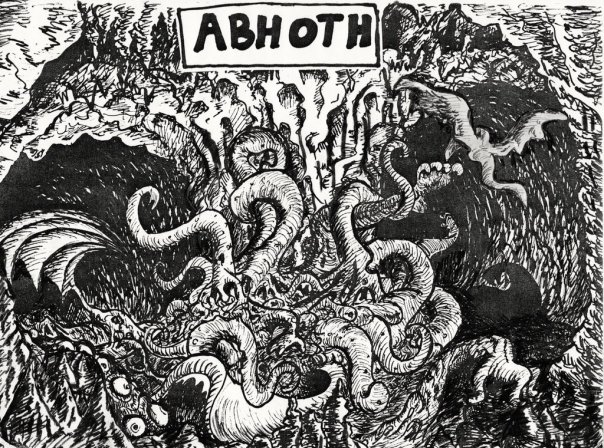 Clark Ashton Smith’s Abhoth by Buzrael (www.deviantart.com)
Clark Ashton Smith’s Abhoth by Buzrael (www.deviantart.com)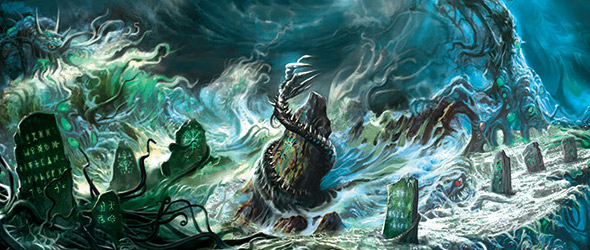 Ubbo-Sathla from
Ubbo-Sathla from  Elder Thing’s head by Skullbeast (www.deviantart.com)
Elder Thing’s head by Skullbeast (www.deviantart.com) The Miller-Urey experiment in created the precursors for life in a laboratory (www.wikipedia.com)
The Miller-Urey experiment in created the precursors for life in a laboratory (www.wikipedia.com) The creation of oil-based protocells in the lab (www.nextnature.net)
The creation of oil-based protocells in the lab (www.nextnature.net) The Elder Thing by Triville (www.deviantart.com)
The Elder Thing by Triville (www.deviantart.com)